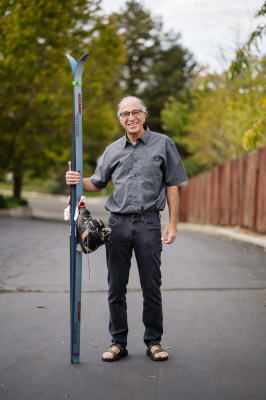11/5/2020 It's Dangerous Out There!
Ski touring involves many hazards - including, but not limited to - avalanches, tree wells, collapsing cornices, rock fall, frozen snowshoe tracks, and icy parking lots. While having fun is the obvious goal of each tour, so is returning to the trailhead unscathed. What this means is that your backcountry kit doesn’t just end with skis, boots, poles, and skins. There are three general types of backcountry safety gear: helmets, avalanche, and mountaineering.
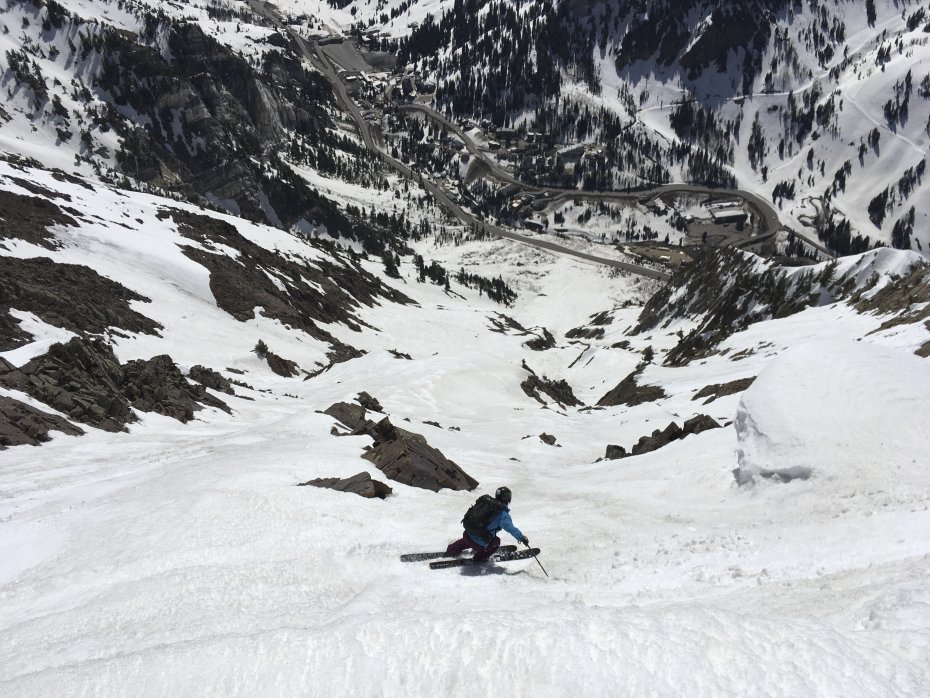
Protect your dome!
Let’s start with the most obvious one: helmets. Do you remember when your parents warned you about the dangers of riding your bike without a helmet? Well, I’m not your mom, but I will say it’s very unwise to go into the backcountry without a helmet. For ski touring there are two distinct types of helmets to choose from that are designed for specific uses: climbing/mountaineering helmets and dual certified helmets for ski and mountaineering helmets. So no, your bike helmet won’t suffice (unless it’s the Movement 3tech Alpi helmet). The main differences are weight, ventilation, and level of certified protection.
Climbing/mountaineering helmets are single certified (EN 12492), meaning they are certified to primarily protect your head from things falling straight down onto your big, gooey brain - think rockfall while climbing a couloir. Because of this, the majority of their construction is reinforced along the top of the helmet and isn’t as protective on the sides. The trade-off, however, is that they are much lighter and better ventilated than ski-mountaineering helmets.
Ski and mountaineering helmets are dual-certified (EN 12492 and EN 1077), so they provide the same amount of protection that the aforementioned mountaineering and climbing helmets offer, while also being certified for skiing. There’s protection all around the interior of the helmet to help minimize concussive force to the sides of your head and temples, in the unfortunate case you headbutt a rock during a fall. All this extra protection comes with some disadvantages though - they are heavier and don’t ventilate as well.
So, generally speaking, skiers that opt for climbing-only helmets will argue that the ventilation allows them to wear their helmet all day long, including while skinning uphill, even if it means less protection from ski crashes. On the flip side, proponents of dual-certified helmets choose the greatest level of protection for the downhill when they are going fastest and have the highest chance of head trauma. Manufacturers, especially Petzl, are working hard to find a middle ground unicorn in this helmet connundrum. In the meantime, which option you choose depends on your ski terrain, heat output, and risk assessment. For racers, it’s worth noting that the International Ski Mountaineering Federation requires competitors to wear dual-certified helmets.
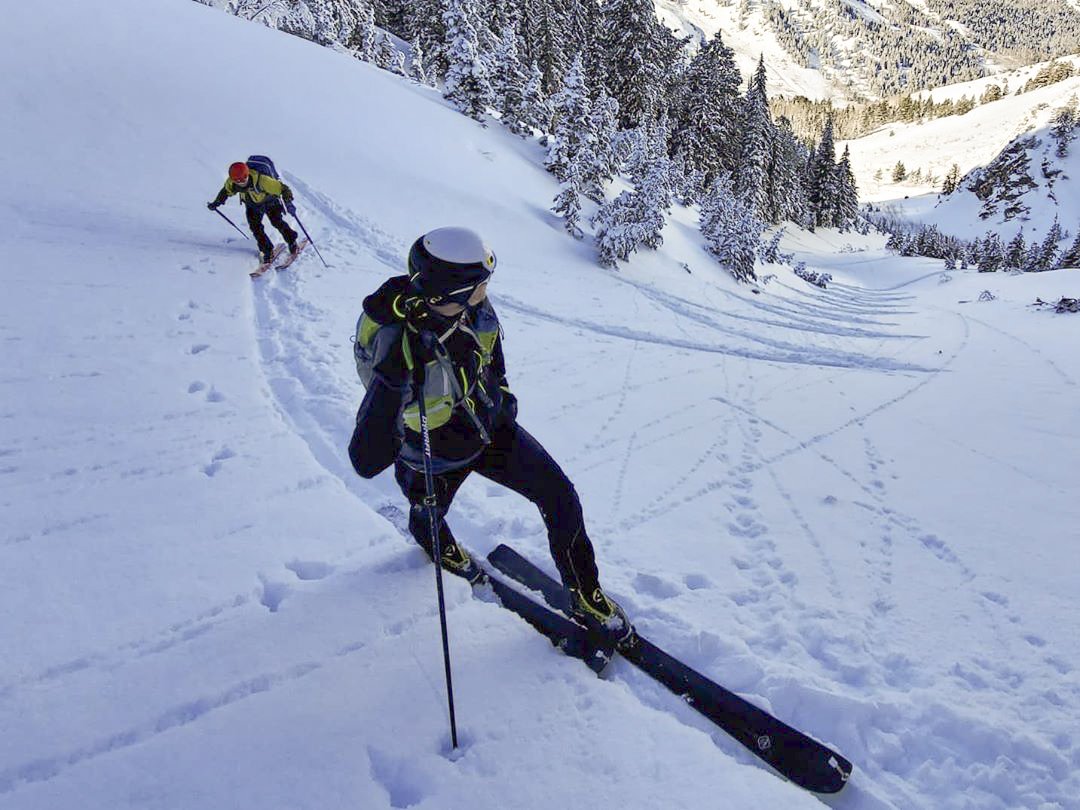
Beep, poke, scoop
When it comes to avalanche safety gear, the holy trinity - beacon, probe, and shovel - are mandatory at all times. Okay, maybe not when you’re eating celebratory burritos but everywhere past the parking lot!
As an overview, beacons emit a signal that can be detected by any other beacon nearby. This allows rescuers to quickly and accurately locate a buried avalanche victim since time is of the essence in these situations. Once you zero in on the victim, it is time to use a collapsible pole, known as a probe, to locate their depth. Once straightened, push the probe vertically through the snow until you strike the victim, which will feel solid, yet forgiving. Leave the probe in place and start using your shovel to move snow away in a fury to unbury the victim. You can see how all three are critical and work in tandem to save lives - much like stop, drop, and roll.
When it comes down to it, modern beacons are all very capable now that triple antennas and 50m+ search ranges are the norm. What makes the biggest difference is your familiarity with your new beacon’s interface. You don’t want to be scratching your head in confusion when using it in a real life situation. At Skimo Co, many of our staff use the Arva Neo series.
Similarly, probes’ biggest variant is its length. Longer probes allow rescuers to penetrate deeper in an avalanche debris pile which is advantageous in large slides or terrain traps. Of course, longer means slightly more weight and more pack volume. Somewhere between 240cm and 300cm in length is the sweet spot, like the Mammut Speed Lock Pro 280.
Shovels are a bit trickier to shop for as there are more design variables, schools of thought, and personal preferences. Size of the blade determines how much snow can be displaced in one scoop. It’s understandable to think that bigger is always better, but keep in mind that larger loads of snow on each shovel scoop can be exhausting and inefficient. Smaller shovels, of course, move less snow at a time but are lighter and fit easier in a pack. Like I said, personal preferences are huge. To add to the confusion, some shovels are designed to meet race specifications (Arva Ultra and CAMP Crest) but are generally not suitable for everyday touring. A few great options that straddle the line between weight and efficiency are the Ortovox Pro Light Shovel and Mammut Alugator Light.
Learn and practice, practice, and then practice some more
No matter which pieces of gear you choose, the most important part is understanding how to use them. Familiarize yourself with the gear in a non-emergency situation. Beacon parks are an excellent resource to cement your skills. Avalanche safety is imperative knowledge for anyone in the backcountry. If you’re new to backcountry skiing or avalanche safety in general, I highly recommend attending an avalanche safety course. 'Know-Before-You-Go' is a great resource for brushing up on skills. Once you’ve got a solid base knowledge, put it to use with some snow study tools such as saws, loupes, thermometers, and rulers. These enable skiers to better understand what’s going on above and below the surface of the snowpack. The more information you have, the better decisions you're able to make.
And since you can never fully eliminate the chance of an avalanche, airbag backpacks have become quite popular. They have been proven to save lives in certain avalanche situations. When deployed, a big airbag rapidly inflates which decreases your chances of being buried (known as the “Brazil Nut” effect.) Unfortunately, airbags do add a substantial amount of weight to your kit. With that in mind, the Mammut Ultralight Airbag Pack is our lightest option.
A few extra grams worth the weight
First aid kits are often forgotten as an essential part of a ski kit, and if you’re one of the ultralight-everything spandex wearing folks that frequents our shop, then the odds are good that your first aid kit is simply an extra neck buff and a voile strap. I suggest that everyone think through their first aid kit and consider what you’ll need in the event of an emergency. For some, that means going to the store to buy an entire kit while others simply need to add items like aspirin, benadryl, and bandages. Including extra screws, tailclips, zip ties, rescue blanket, and small tools is a good idea too. Personally, I toss in some candy as a morale booster for those real long slogs.
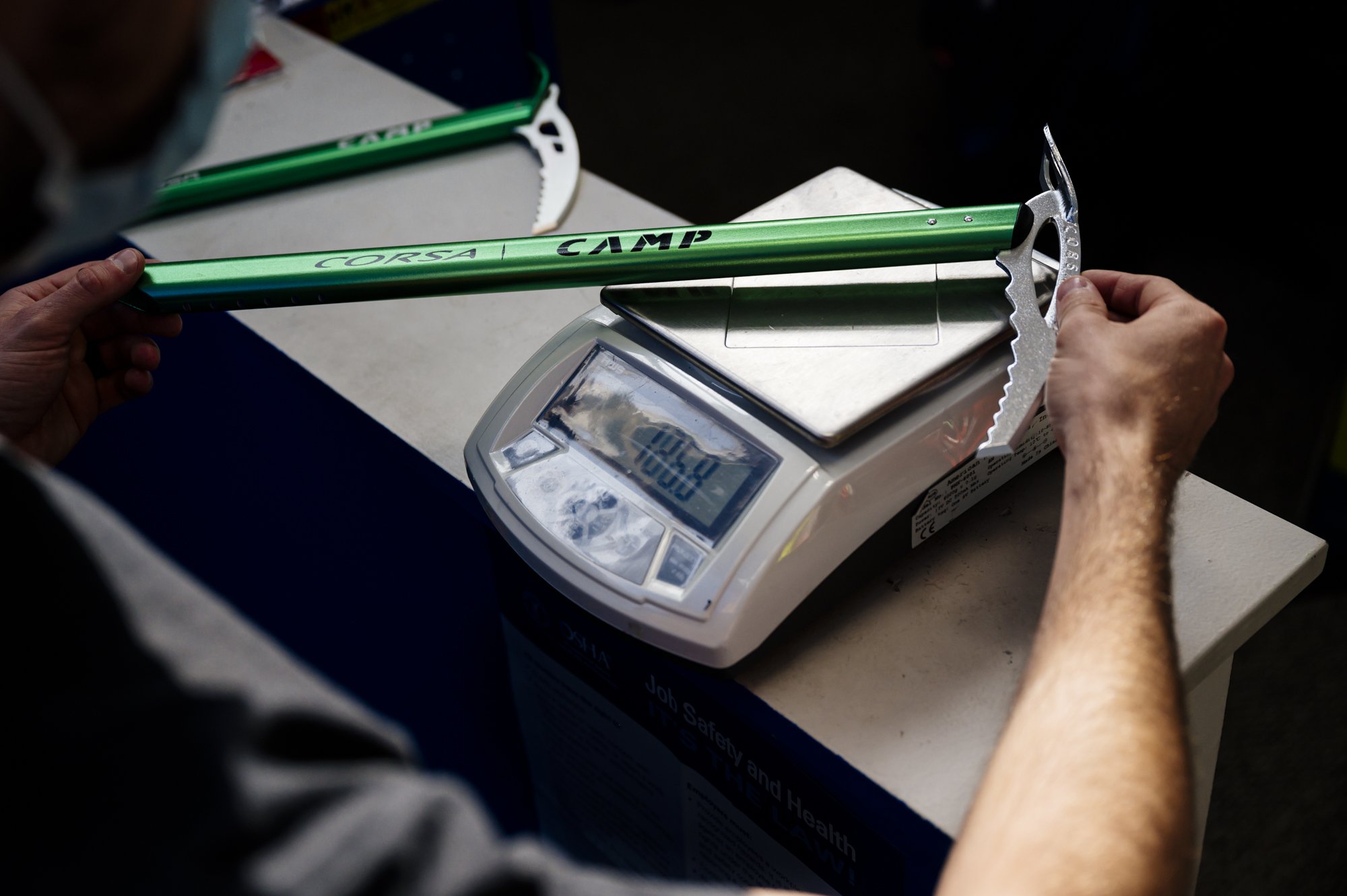
Pointy things
Lastly, there’s mountaineering gear. The gear in this category is only necessary for certain conditions, namely firm, steep, and technical. For example, ice axes are rarely required on a powder day but can make or break your outing during a day of skiing spring corn. In other words, you don’t need them until you really need them. The most common mountaineering items are crampons, ice axes, and harnesses.
Attached to your ski boots, the sharp points of crampons give you traction by penetrating firm snow and ice like a dart in a bullseye. There are two different metal types used when it comes to boot crampons: steel and aluminum. Each has its own pros and cons since they are designed to hold up to different techniques for different terrain.
Steel is naturally strong so it makes sense that steel crampons are the durable option - they will not be very susceptible to breaking or wear down easily. As a result, steel crampons can withstand harsher uses, such as trampling over rock and firm ice. With this durability comes a weight penalty though since they’re heavier than aluminum.
Aluminum is the yin to steel’s yang. It is a very lightweight material, proving to make aluminum crampons an excellent choice when conditions are all snow and don’t involve vertical climbing or strolling on rocks.
Some brands split the difference with a hybrid of the two materials, such as the Petzl Irvis Hybrid. The end result is a lightweight crampon that features steel parts where needed.
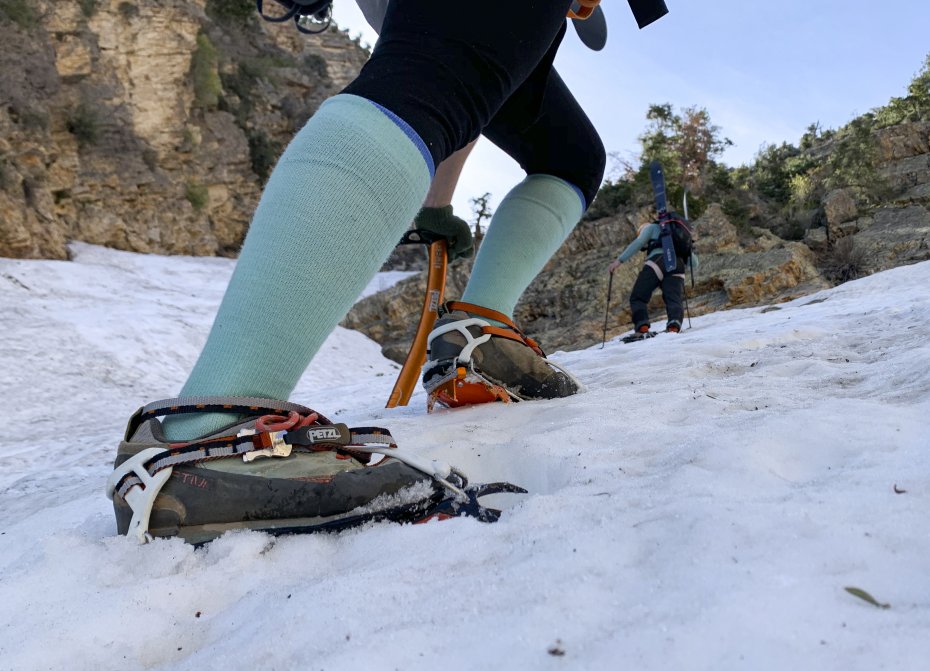
The quintessential mountaineering tool, ice axes provide support and security for steep climbing - kind of like a portable handrail. Similar to their feet brethren, they are also entwined in the aluminum/steel debate and again, the choice boils down to intended uses. Most utilize aluminum for the shafts to shave weight, but the picks and spikes vary. Looking for lightweight stability when climbing snow? Aluminum all around. CAMP Corsa Ice Axe is reliable and lightweight. Looking to be able to set a pick when the climbing goes real steep and icy? Aluminum with steel picks will give you weight and strength. Petzl Sum'Tec is legendary. And if you’re the type of person who drools over frozen waterfalls and puts more emphasis on the “Mo” than the “Ski,” you’re going to want to look at specialty ice tools. Those are outside the purvey of most ski mountaineers since vertical ice rarely makes for good turns. Memorable? Yes. Good? Nope.
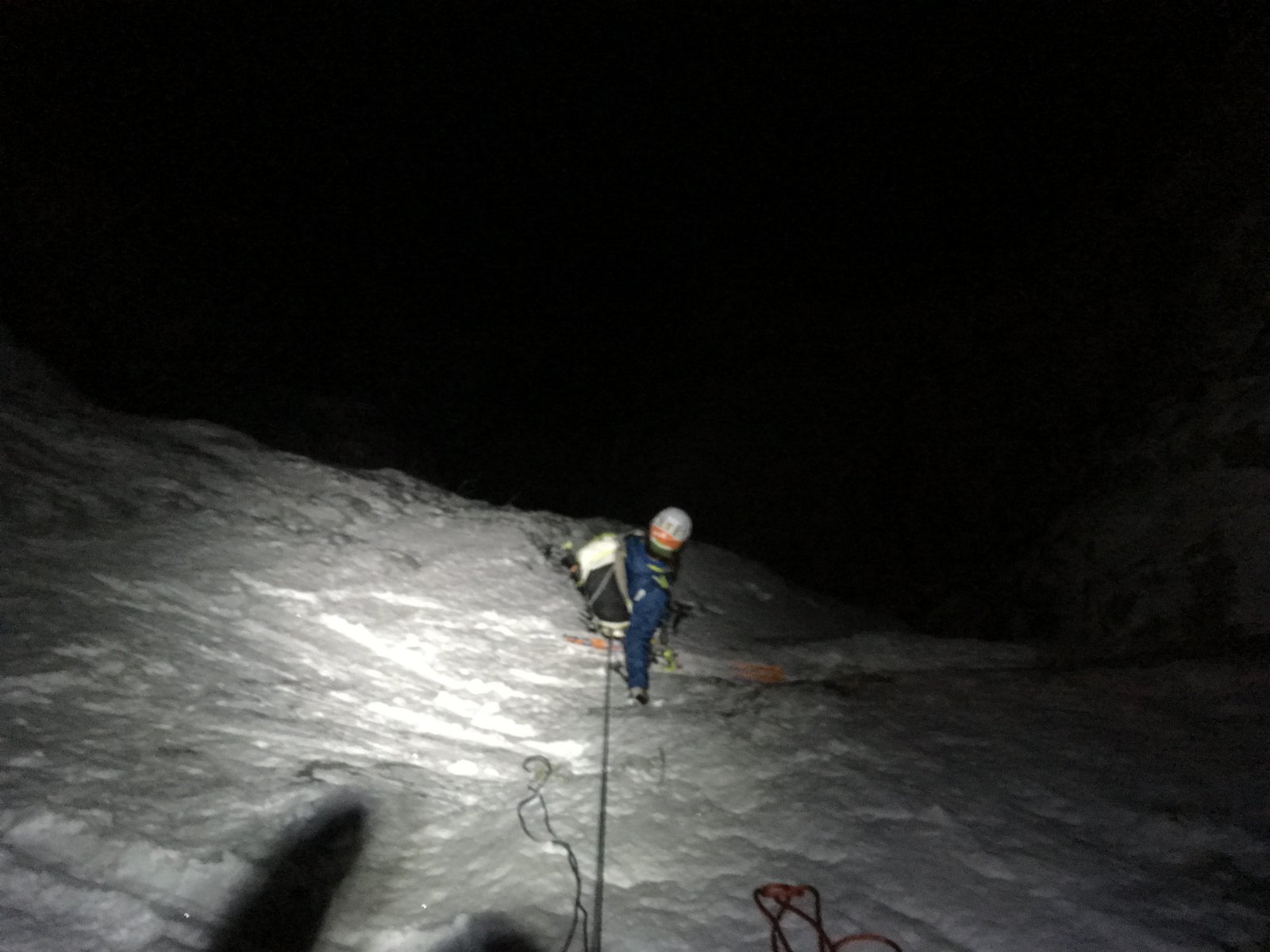
Harnesses are imperative when your ski line involves cracked glaciers, ends in a cliff rappel, or IS a rappel like the above photo. Ski mountaineering specific harnesses are designed to prioritize packability and avoid unnecessary weight. They are, however, less comfortable to wear than traditional climbing harnesses since they are not meant to be weighted for long periods of time. Keep in mind that ski clothes help cushion so less padding is necessary. Some feature loops that allow skiers to have ice screws, carabiners, and other tools easily accessible. The Petzl Fly is an exciting new option that is fully featured and has removable padding that allows it to shave even more weight!
In the backcountry, you are ski patrol
If you’ve made it this far, good work! Afterall, I get it. Considering what you need in emergency situations isn’t nearly as fun as shopping for skis. One conjures up daydreams of powder turns, big days in the mountains, and skin track conversations with friends. The other evokes dreadful scenarios of scary conditions, injuries, and worse. However, when ski patrol isn’t nearby to rope off dangerous runs or kindly transport you to the hospital, a full consideration of safety is a must. That’s the kind of skier most people, myself included, want to tour with. And I share candy with my ski partners...
Comments
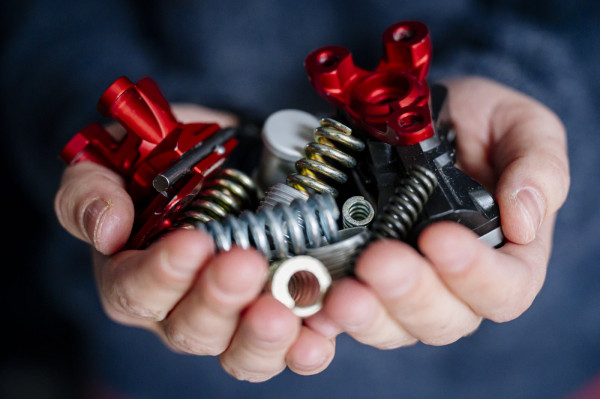
11/9/2020
Binding Recycling
